Complete Solutions to Solved Examples of chapter CENTRE OF MASS of Class 11 book with complete answers and questions
| Class 11 | PHYSICS |
| Chapter | CENTRE OF MASS |
| CENGAGE PHYSICS | Solved Examples |
| Number Of Questions | 13 |
| Academic Year | 2023-24 |
A body of mass `1 kg` initially at rest, explodes and breaks into three fragments of masses in the ratio `1 : 1 : 3`. The two pieces of equal mass fly off perpendicular to each other with a speed of `15 m s^(-1)` each. What is the velocity of the heavier fragment?
05:06View SolutionA wedge of mass `m_2` is kept on a spring balance. A small block of mass `m_1` can move along the frictionless incline of the wedge. What is the reading of the balance while the block slides? Ignore the recoil of the wedge.
 02:50View Solution
02:50View SolutionA spring is connected with plank and other end of spring is connected with a block of mass `m`. initially spring is stretched by a distance `x_(0)` and block is connected with a thread which is connected to other end of the plank as shown. If thread is cut, what will be maximum speed of the plank.
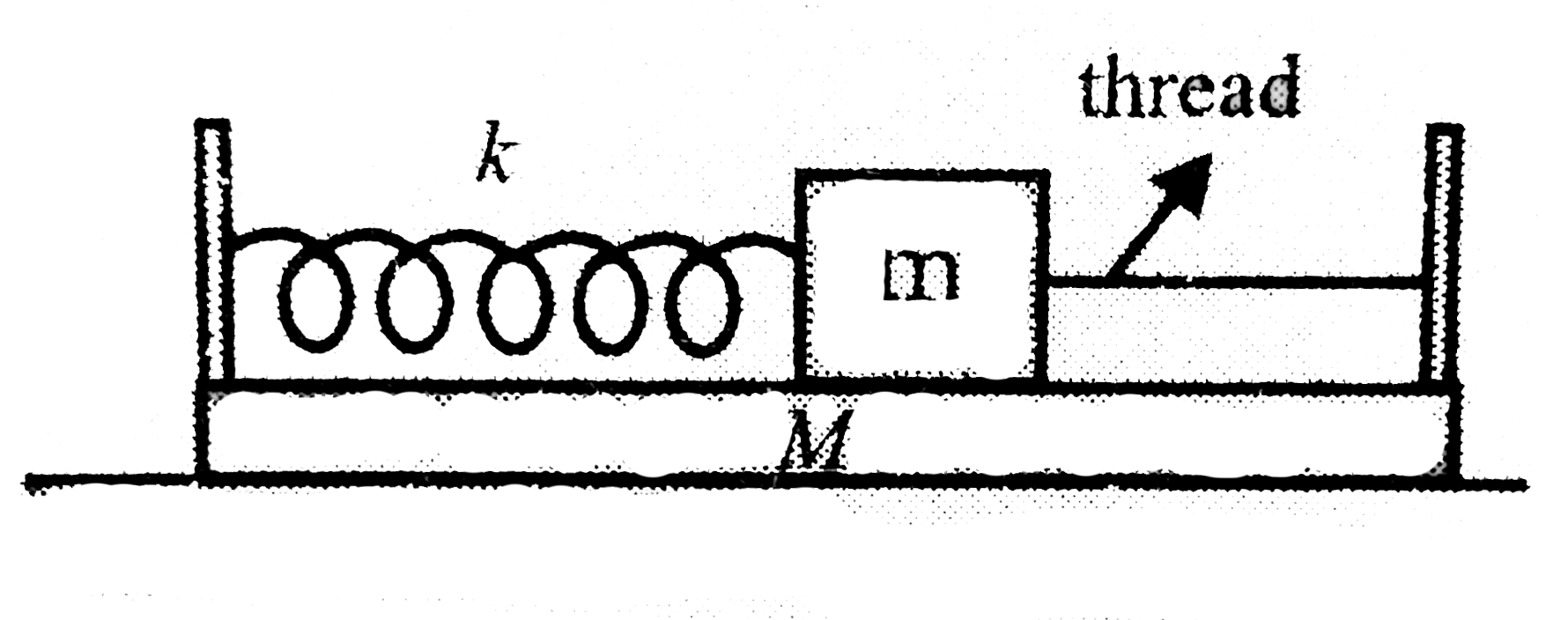 View Solution
View SolutionA wedge having a vertical slot in it is placed on smooth horizontal surface as shown in the figure. Two blocks are arranged as shown in the figure. The system is released from rest calculate the speed of the wedge when block 1 comes down a distance `h`.
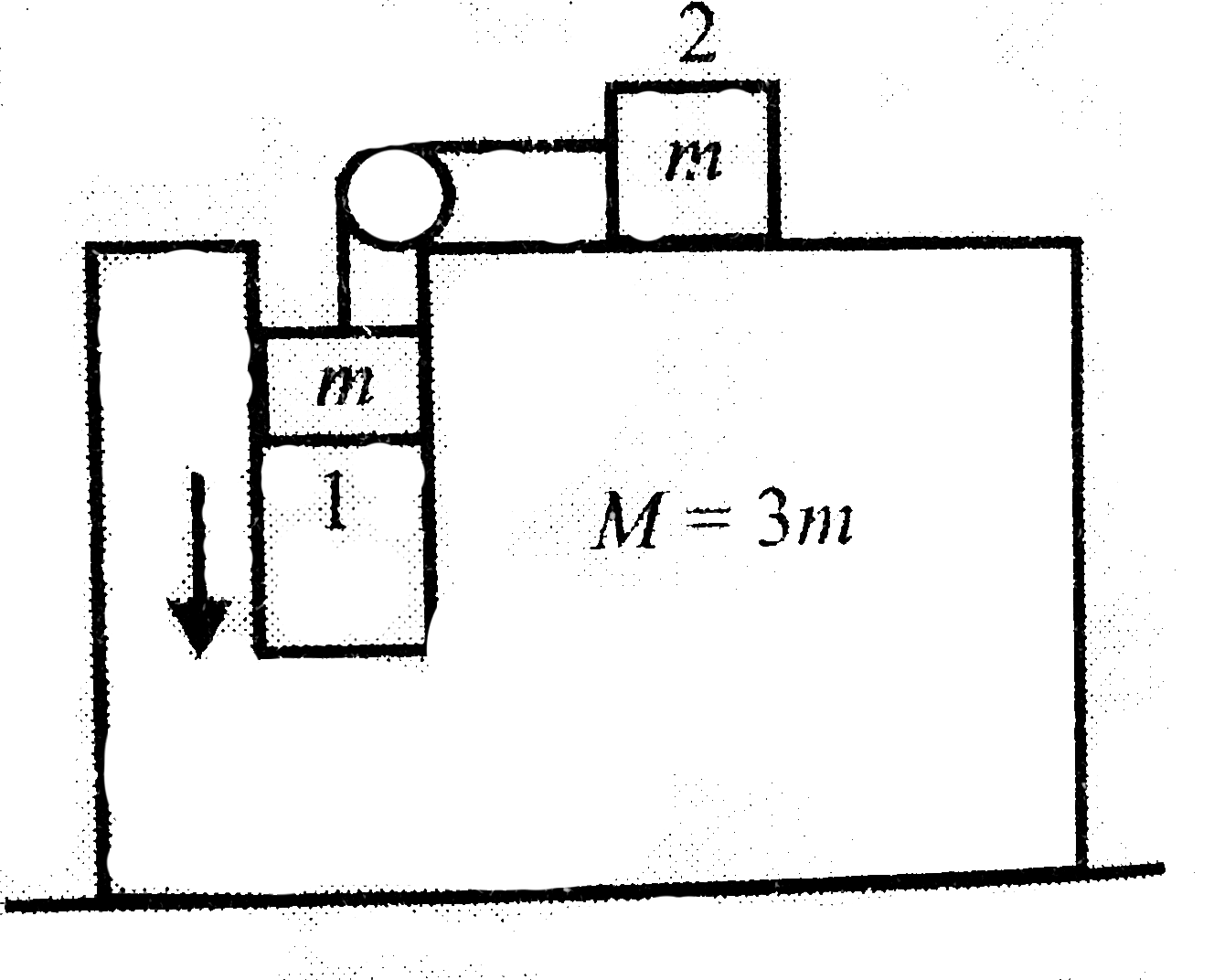 03:52View Solution
03:52View SolutionA rope thrown over a pulley has a on one of its ends and a counterbalancing mass `M` on its other end. The man whose mass is `m`, climbs upwards by `vec/_\r` relative to the ladder and then stops. Ignoring masses of the pulley and the rope, as well as the friction the pulley axis, find the displacement of the centre of mass of this system.
View SolutionA block of mass `m` is relesed from rest from a height `h` onto a smooth sledge of mass `M` fitted with an ideal spring of stiffness `k`.
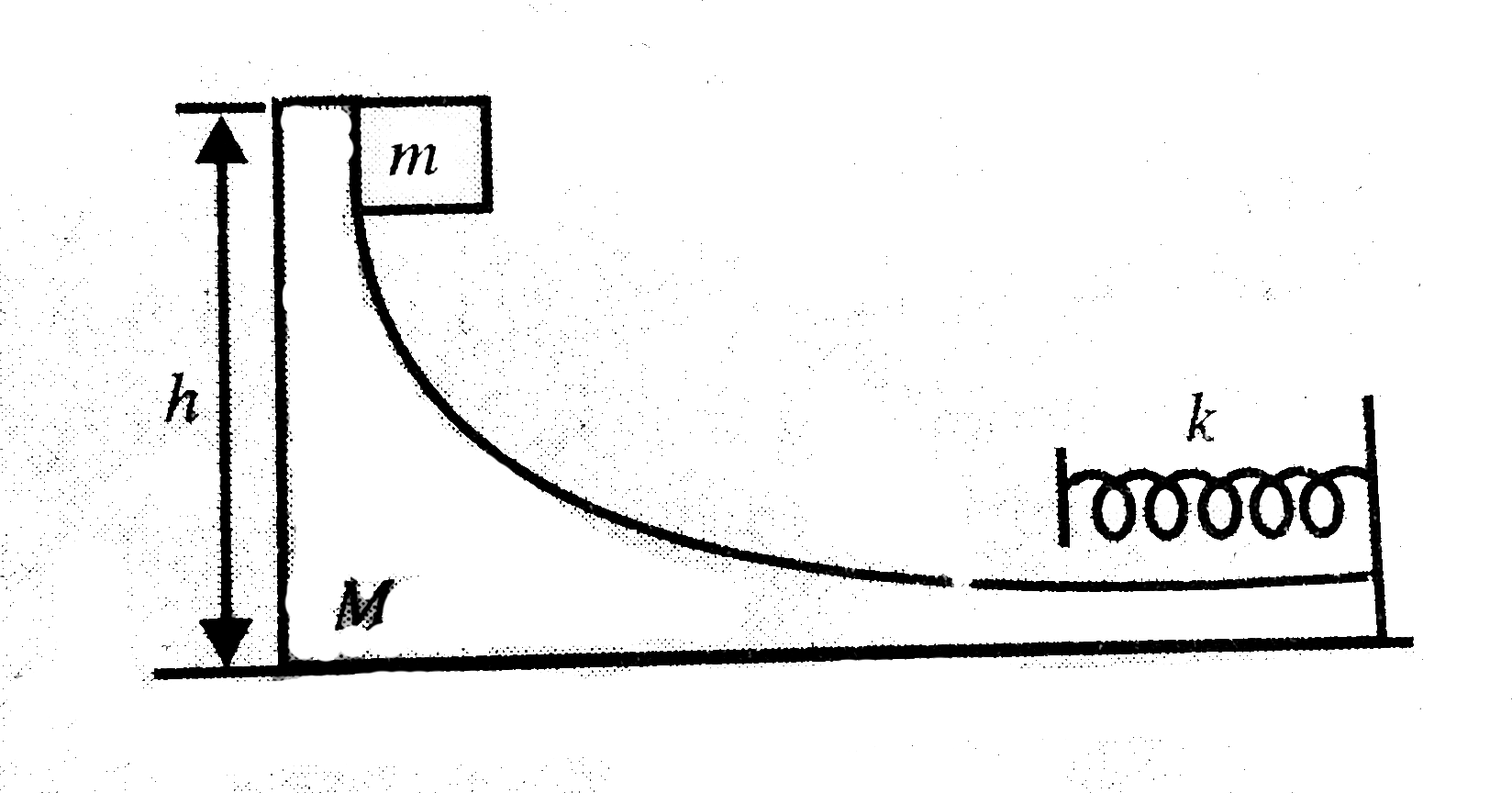 View Solution
View SolutionA particle of mass `m_(1)` is projected to the right with speed `v_(1)` onto a smooth wedge of mass `m_(2)` which is simulateoulsy projected due the left with a speed `v_(2)`. If the particle attains the highest point of the wedge, find `h`.
 View Solution
View SolutionA small ball of mass `m` is projected with a minimum horizontal velocity `v_(0)` on a smooth wedge of mass `M` so that it will reach the highest point of the wedge. Find the value of `v_(0)`
 View Solution
View SolutionA bead of mass `m` kept at the top of a smooth hemispherical wedge of mass `M` and radius `R`, is gently pushed towards right. As a result, the wedge slides due left Find the
a. speed of the wedge
b. magnitude of velocity of the beard relative to the wedge.
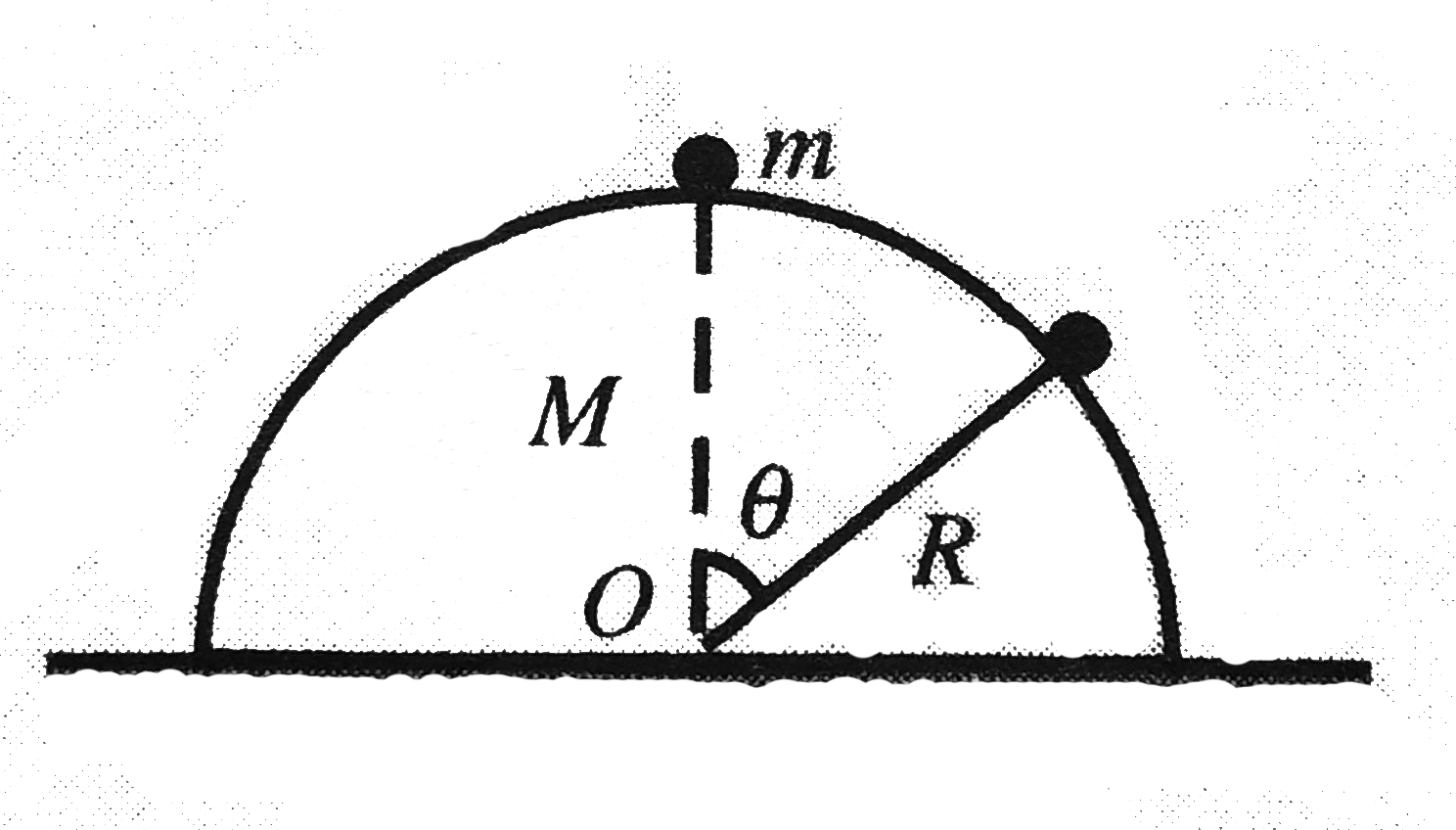 View Solution
View SolutionThere are two pendulums with bobs having indencital size and mass. The pendulum `A` is released from rest in the position as shown in the figure. If the maximum angle formed by cord `BO'` with vertical in the subsequent motion of sphere `B` is equal to the angle `theta_(0)` If the coefficient of restitution between sphere `A` and sphere `B` is `l`. find
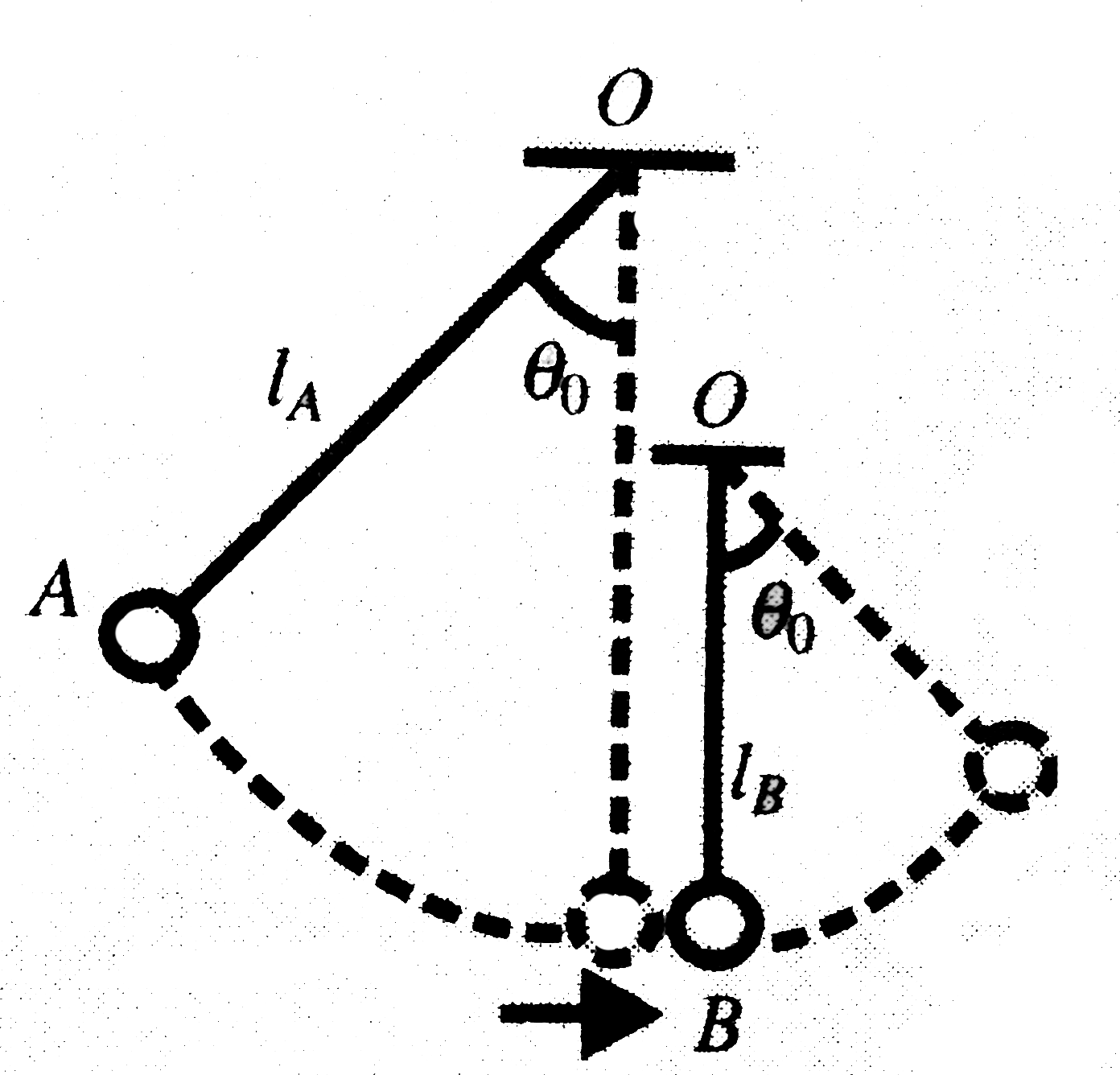
a. the velocities of sphere `A` and sphere `B` just after collisions
b. the ratio of lengths of pendulums `l_B//l_A`.View SolutionAn empty luggage carrier `A` of mass `M=40 kg` slide without friction on horizontal floor hits with a velocity `v_(0)=5ms^(-1)` an identical carrier `B` containing m=15 mg suitacase. The impact causes the suitcase to slide on the floor of carrier `B` and collide with the left wall of carrier `B`. knowing that the coefficient of restitution between the two carriers is `0.80` and that the coefficient of restitution between the suitcase and the wall of carriere `B` is `2//9`. Assume no friction any where. Find

a. the velocities of carrier `A` and carrier `B` just after collision.
b. the velocity of carrier `B` after the suitcase its the wall for the first time isView SolutionA ball of mass `m` is pushed with a horizontal velocity `v_(0)` from one end of a sledge of mass `M` and length `l`. if the ball stops after is first collision with the sledge, find the speeds of the ball ad sledge after the second collision of the ball with the sledge.
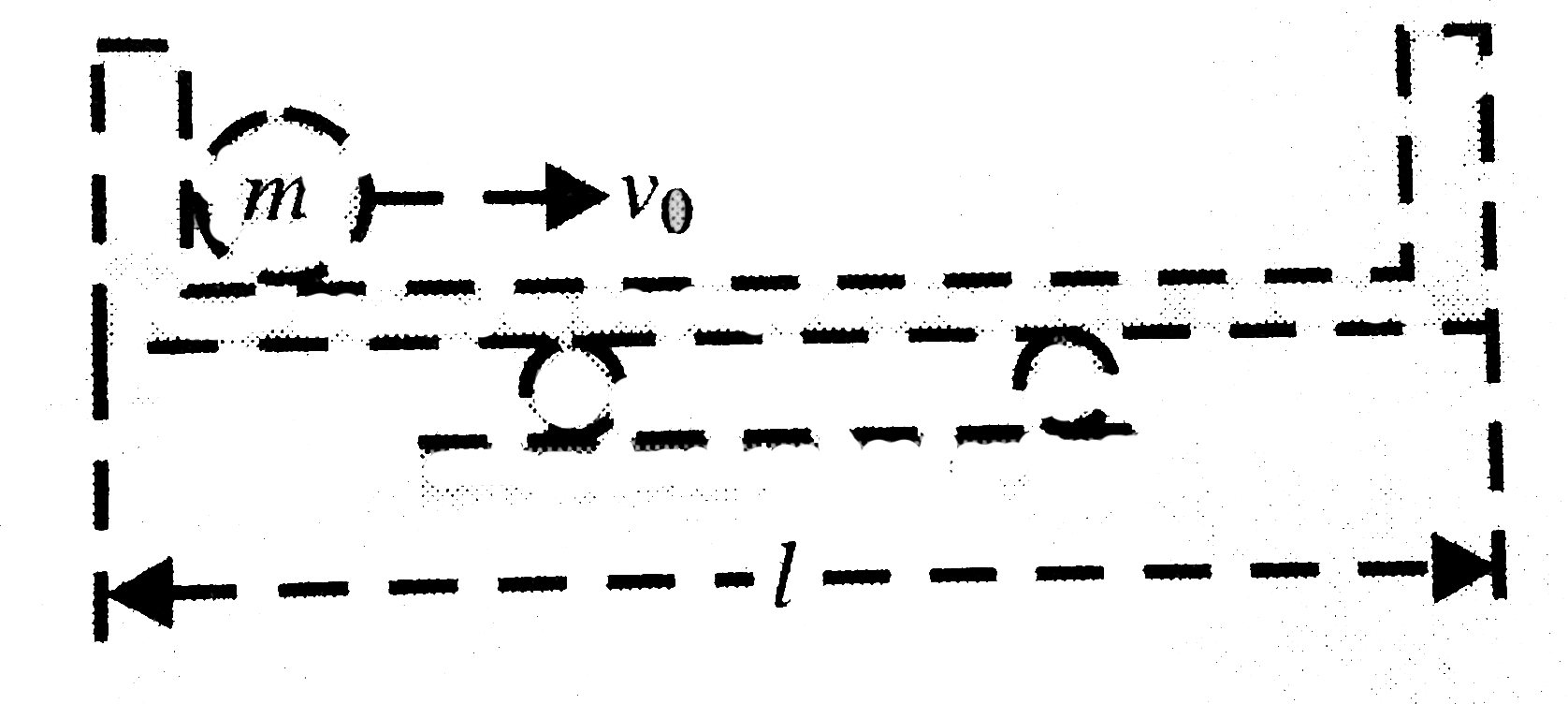 View Solution
View SolutionTwo spherical bodies of mass `m_(1)` and `m_(2)` fall freely through a distance `h`. before the body `m_(2)` collides with the ground. If the coefficient of restitution of all collisions is `e`, find the velocity of `m_(1)` just after it collides with `m_(2)`
 05:53View Solution
05:53View Solution
Solved Examples questions and complete solutions for chapter CENTRE OF MASS of CENGAGE PHYSICS (HINGLISH) of Class 11
